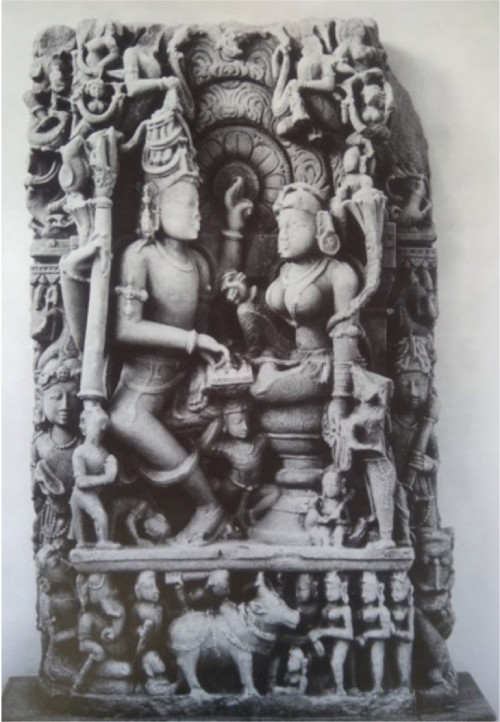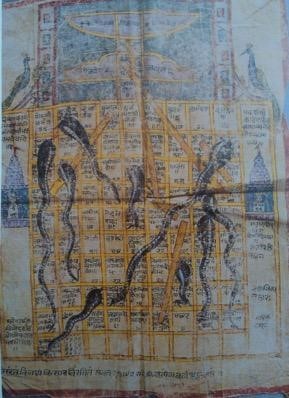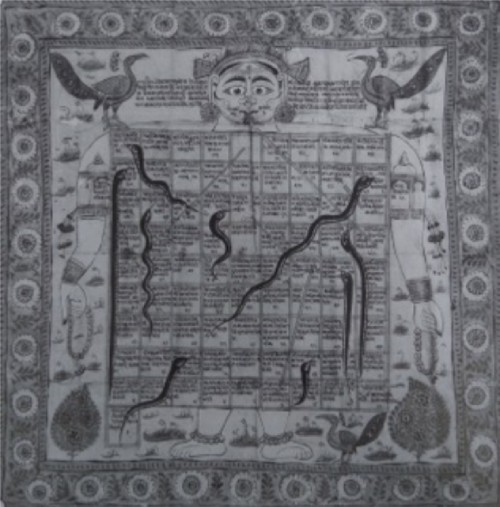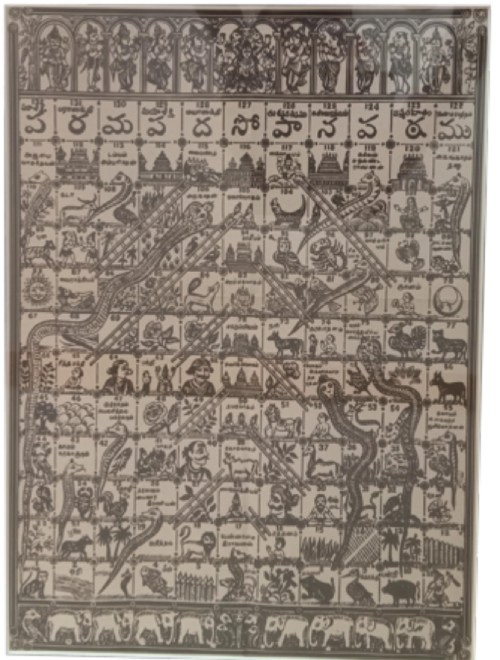India is one of the oldest civilizations around the world, throbbing with a vast, rich and diverse cultural heritage. The comprehension of this cultural heritage maybe a colossal task, but it is imperative that we preserve it for generations to come. Among the many resilient features of this heritage, one that is largely undocumented is indigenous games. A study of the world’s popular games reveals their deep roots in ancient India.
Mythologies & artistic depictions- paintings & cave sculptures portray the games played between Lord Shiva & Parvathi, Lord Krishna & Radha, Pandavas & Kauravas, Nala & Damayanthi. Excavations at historic places and references from scriptures have brought to light, play at various time periods in Indian history. While we have material evidence of game pieces excavated from the indus valley regions (2000 bc), the earliest literary evidence is the ‘gambler’s hymn’ in the Rigveda (e.g. Ṛgveda 10.34). Verses from Manusmriti imply that gambling was prohibited, whereas writings of other lawmakers such as Yajnavalkya, Vasistha, Narada, Kautilya (Chanakya) suggest that gambling was allowed under the state’s supervision. Elaborate rituals and spells were prescribed to ensure success in the game. Even a casual perusal of the ancient games makes one aspect clear, game play was not a frivolous activity.

Relief of Shiva Parvathi playing dice, Rani Durgavathi Museum Jabalpur, 10thC Micaela Soar “Shiva and Parvati at play“
The early games were fundamentally sacred, infused with the philosophy of life and served as metaphors for life. The games reflected the spiritual, religious, social & cultural tenets of the society. (life scenarios – daily activities, belief systems, life & death customs, dangers of immoral behaviour, battles, bloodshed and much more.) The metaphorical use of games blurred the line between reality & gameplay and emerged as a quick reference guide during challenging times.
In this reading, my attempt is to draw attention to extraordinary games of Indian origin that have been adapted & become household games, globally.
1. Paramapada sopanapatam
Having several variants within the Indian subcontinent & known diversely as paramapadasopanapatam, gyan chaupar, mokshapatam, or vaikuntapali, the game has gained popularity glaobally as snakes & ladders. The original game remarkably integrated the core of Sanatana dharma’s beliefs - karma and moksha! The game is believed to have been created in the 13th century by the poet saint Gyandev, although there are certain references which take the game back to 2nd century BC. The earliest evidence of the game board is an 84-square gyan chaupar cloth board from Rajasthan dated 1735 CE (Andrew Topsfield; The art of Play, 84 sq Gyan chaupar Board). Each variant appears to have one common goal: lead seekers towards the Ultimate knowledge, Enlightenment or Salvation.

84-square gyan chaupar cloth board from Rajasthan dated 1735 CE, Andrew Topsfield Instant Karma-the meaning of snakes & ladders

84 sq Lokapurusha board, dt 1834, calico museum of textiles, Ahmedabad, Andrew Topsfield

Paramapada sopanapatam with telugu & tamil script, print on paper, undated: Kavade
VARYING GAME NOMENCLATURES & THEIR MEANING
- Paramapada sopanapatam : Steps to salvation
- Moksapatam : Board of enlightenment
- Gyan Chaupar : Game of knowledge
- Vaikuntapali : Steps to Vaikuntha
The snakes & ladders could be seen as metaphorical representations of Maya strewn in the seeker’s path towards enlightenment. The snakes represented the human vices, ladders the virtues and their varying sizes symbolised the potency of human sins & morality. The game squares had karmic terminologies written in devanagari, tamil, telugu &/or persian scripts along with depictions of various lokas, vices & virtues. The top most row denoted the higher realms of heaven & beyond, Kailasa & Vaikunta, the abodes of Lord Shiva & Lord Vishnu respectively. The aim of the game was to reach the winning Vaikuntha square set interestingly in the centre of the top row rather than at the end of that row. A snake placed at the end of the top row suggested the end of one sinful life followed by rebirth filled with optimism for the seeker to reach salvation. (Karma principle). The other notable variant is the Jain 84 square board, which is conceived in the form of a lokapurusha or Cosmic Man, whose protruding head contained the heavenly zones, with depictions of torments of hell below the playing area (Andrew Topsfield; The art of Play, 84 sq Gyan chaupar Board).
It is possible to infer from this elaborate game setup the emphasis on leading a virtuous, devout life. While good deeds or virtues take one closer towards goal (Salvation here), bad actions or vices takes one farther away from success. It brings alive the implicit Sanatana Dharma belief that a steady effort to discard vices and progress through virtuous acts will lead one towards the ultimate liberation from the bonds of Karma & thereof towards enlightenment.
It would be of interest to mention here the development of a 101 sq Islamic version of the game, possibly during the Moghul period. Emulating the heavens in the older formats, the islamic version had Allah positioned at 101 and Shaitan (the devil) at 100 signifying danger lurking close to attainment of salvation.
A wide range of game board size variants have been documented, starting from 72 squares, to some versions with 84, 132 squares and few even as big as 380 squares allowing for higher unravelling of spiritual knowledge. Most of the early boards were ornately decorated with birds, animals, flowers and other elements of nature. In comparison, the modern day snakes & ladders popularised by the British during the 1980s, is a plain 100 square game, stripped bare of its original philosophical essence. Players race across the game board based on the roll of dice, to reach the final square of 100; racing ahead through ladders & plummetting down due to snakes. This has reduced the game interest to much younger audiences today as against the ancient versions which had much to contribute to an individual and society’s development.
References:
- Balambal .V (2005), Folk Games of Tamilnadu: The CP Ramaswamy Aiyar Foundation, p. 81-99.
- Norberg -Hodge, Helena (1991) ”Ancient Futures- Learning from Ladakh”
- Topsfield, Andrew (2006) "Instant Karma: The Meaning of Snakes and Ladders" in Andrew Topsfield (ed.) The Art of Play: Board and Card Games of India. Mumbai: Marg Publications, pp. 74-89.
- Schmidt, Jacob – Madsen, stud Phil. Road Maps for the Soul - a critical reading of five North Indian 72-square gyān caupaṛ boards: The Matheson Trust
- Soar, Michaela (2006) "Shiva and Parvati at Play: Backgammon in Ancient India" in Andrew Topsfield (ed.) The Art of Play: Board and Card Games of India. Mumbai: Marg Publications, pp. 40-59.
